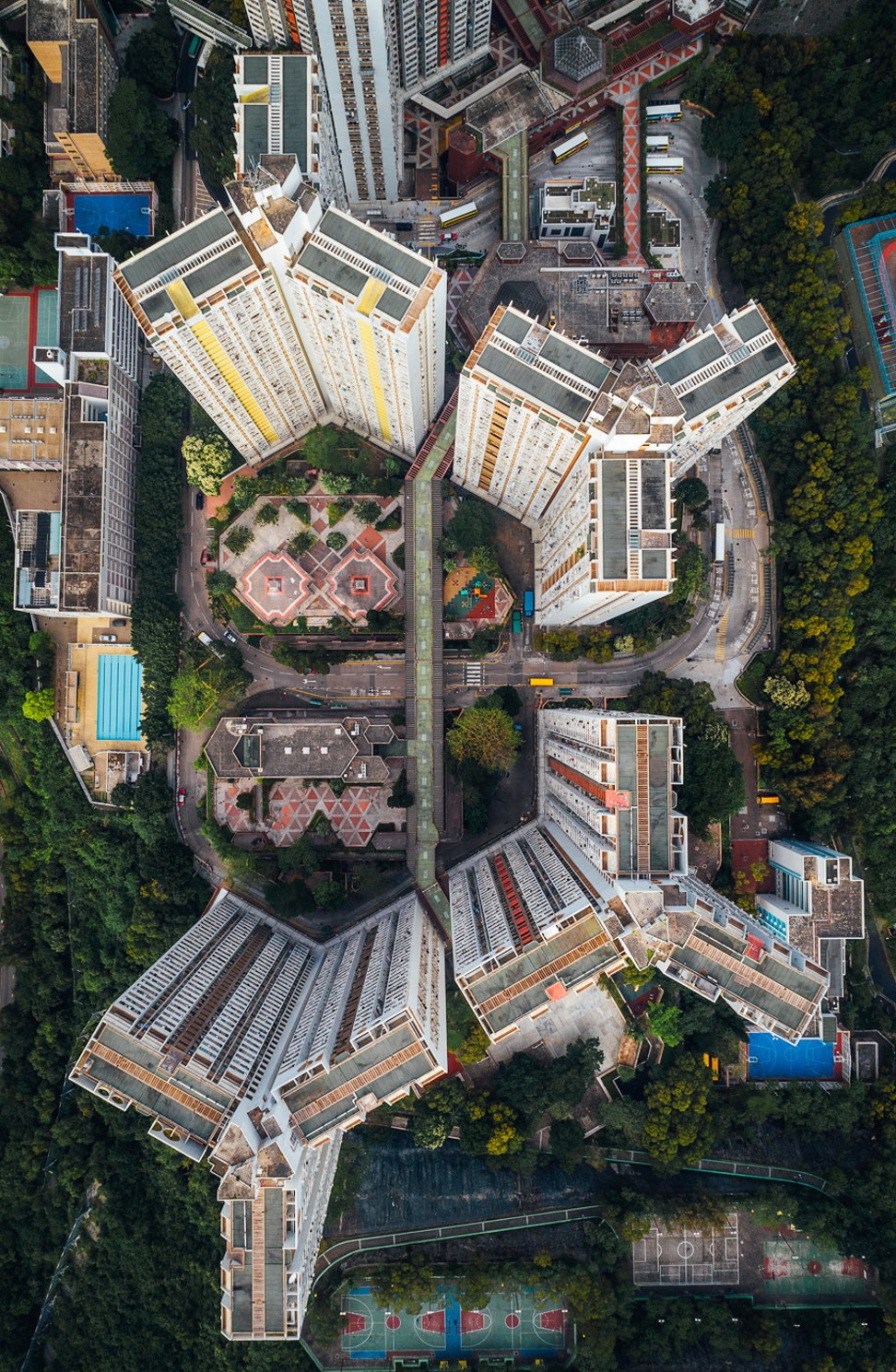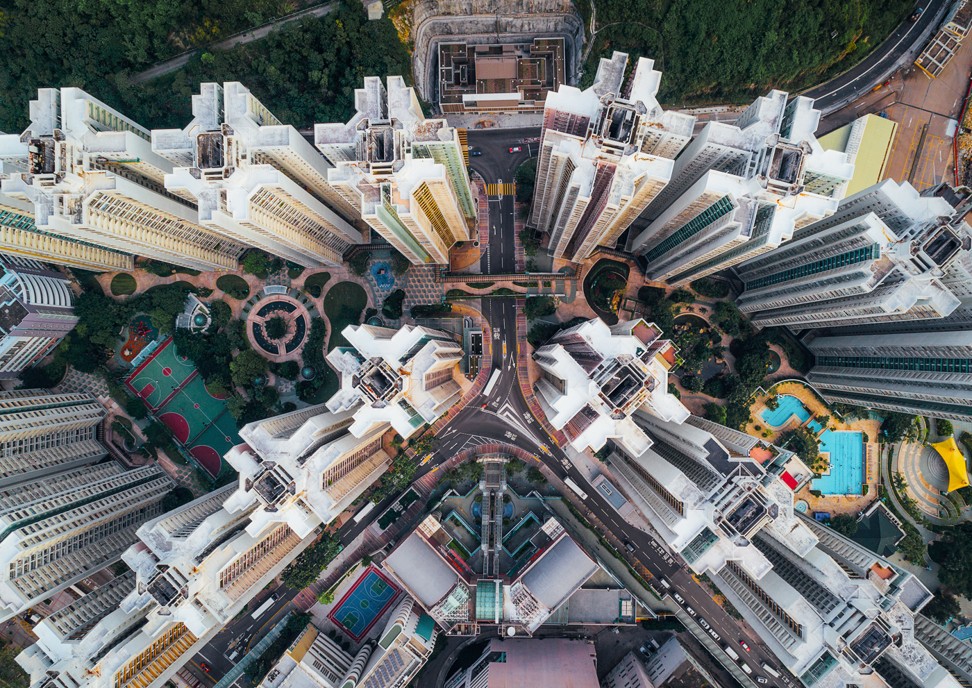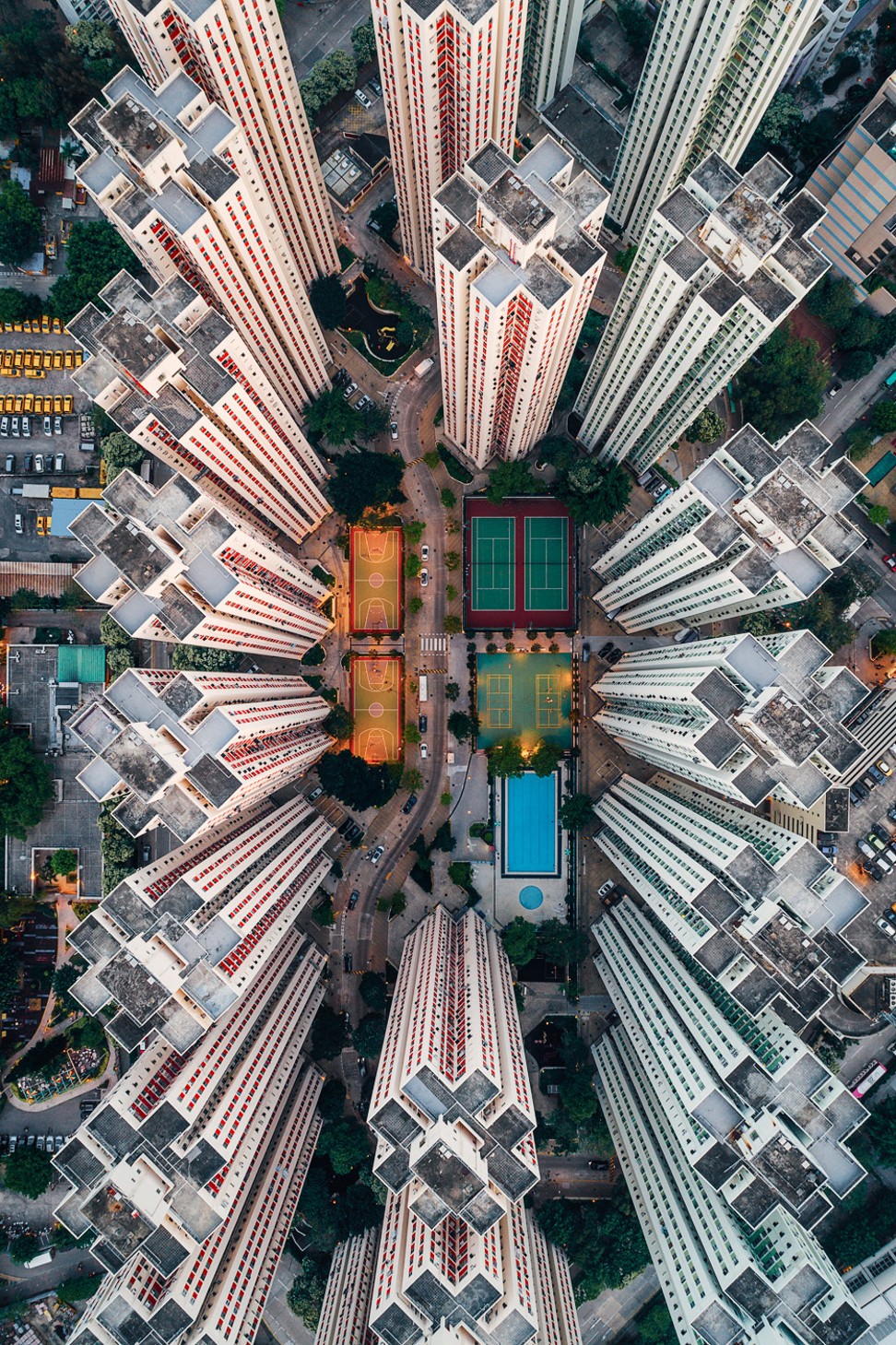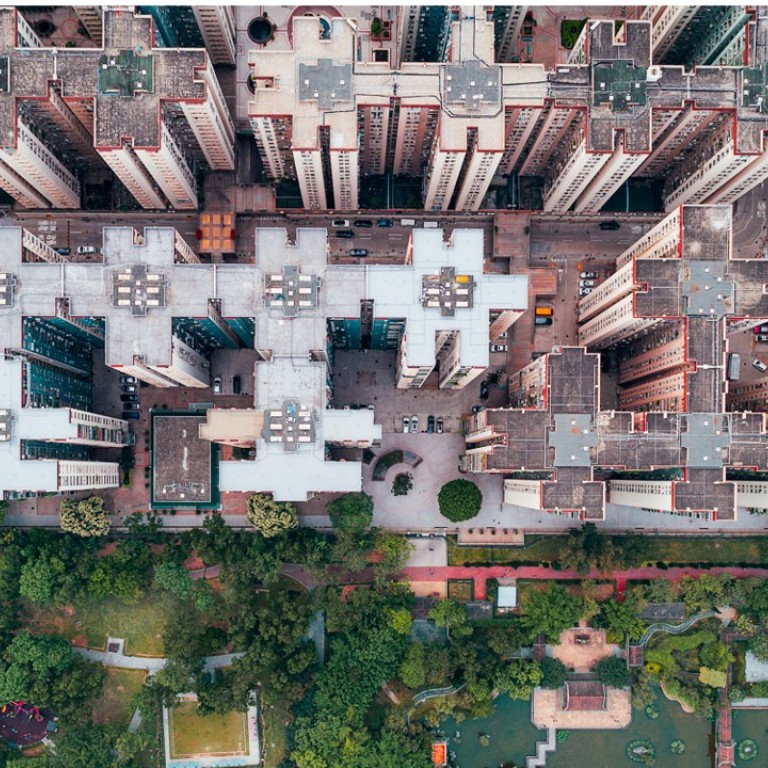
A bird’s-eye view of Hong Kong’s crowded high-rises in local photographer’s Walled City series
Andy Yeung uses a drone to highlight today’s overcrowded residential estates that he says remind him of Kowloon’s infamous Walled City, which he saw demolished when a child
Hong Kong photographer Andy Yeung was just eight years old when demolition of the city’s notorious Kowloon Walled City, began 24 years ago.
“When I was a child I lived near Kowloon Walled City,” he says. “Near enough that I could actually watch from my home how it was being torn down. I have childhood memories of how the big iron ball knocked down the buildings.”
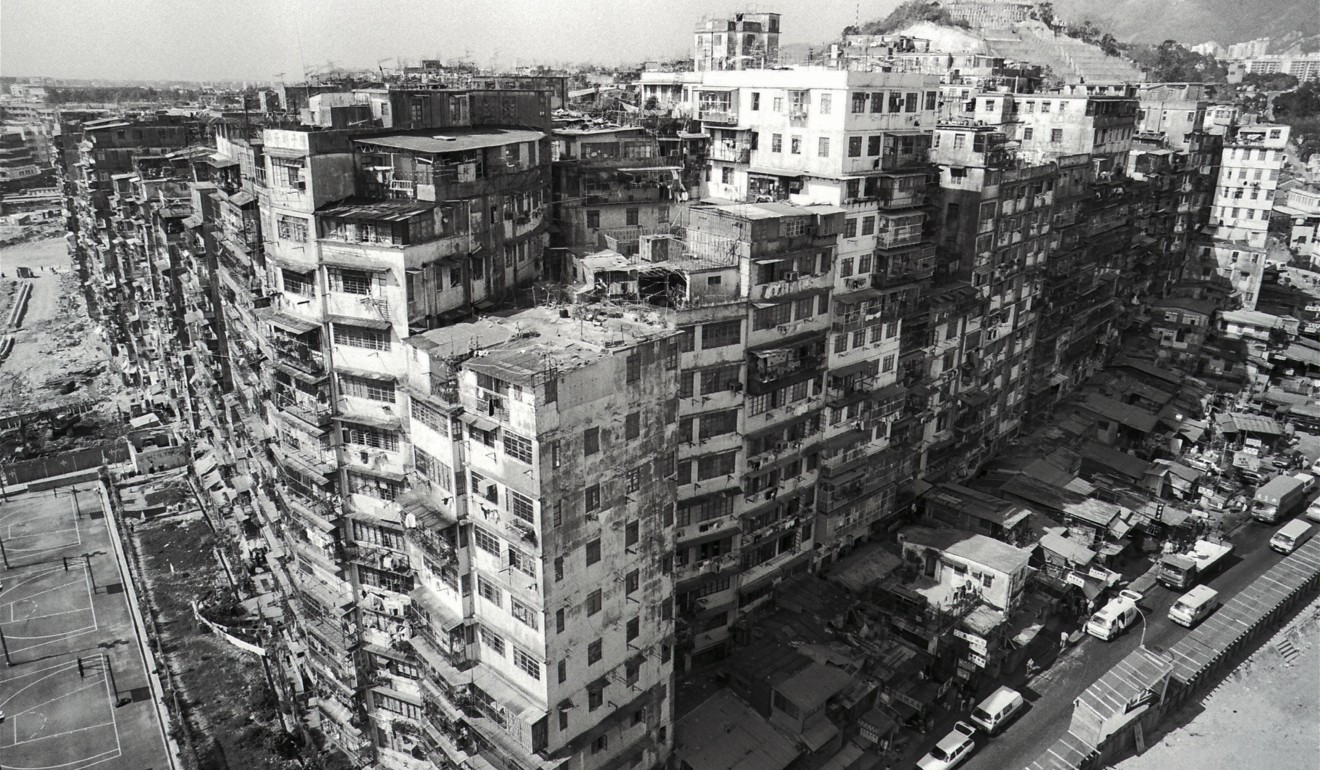
Yeung’s latest aerial photography series, taken over two months across several different locations in Hong Kong, was inspired by Kowloon Walled City, and he hopes it will cast a light on the territory’s cramped housing conditions.
A bird’s-eye view is the perfect way to capture how densely packed some of Hong Kong’s public housing estates are, he explains.
“The Walled City has been destroyed now, but Hong Kong still has some public housing estates which are very overcrowded,” says Yeung.
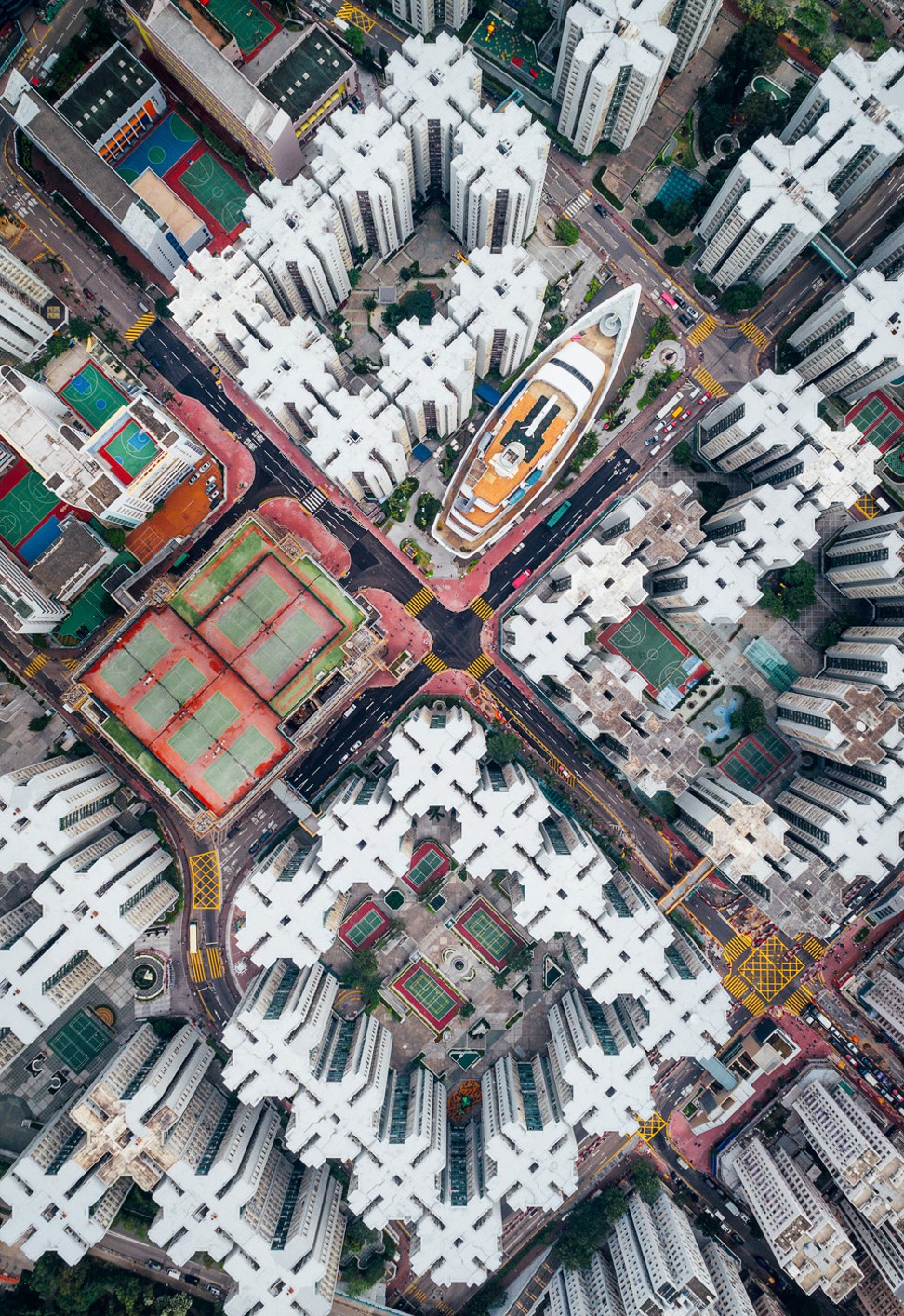
“The way today’s residential apartments are stacked is similar to that of the Kowloon Walled City as Hong Kong has adapted its architecture to accommodate the masses. I wanted to make more people aware of our housing problem, and I wanted to illustrate this in a different, eye-catching way, so I used my drone.”
Now a park, the lawless enclave was considered the most densely populated settlement in the world – with a population estimated at 35,000 – before its residents were relocated. “It was so overcrowded, people would open their window and be looking right into their neighbour’s home,” says Yeung. “There were no elevators, and children would play on the rooftops, jumping from one building to the next, they were so close.”
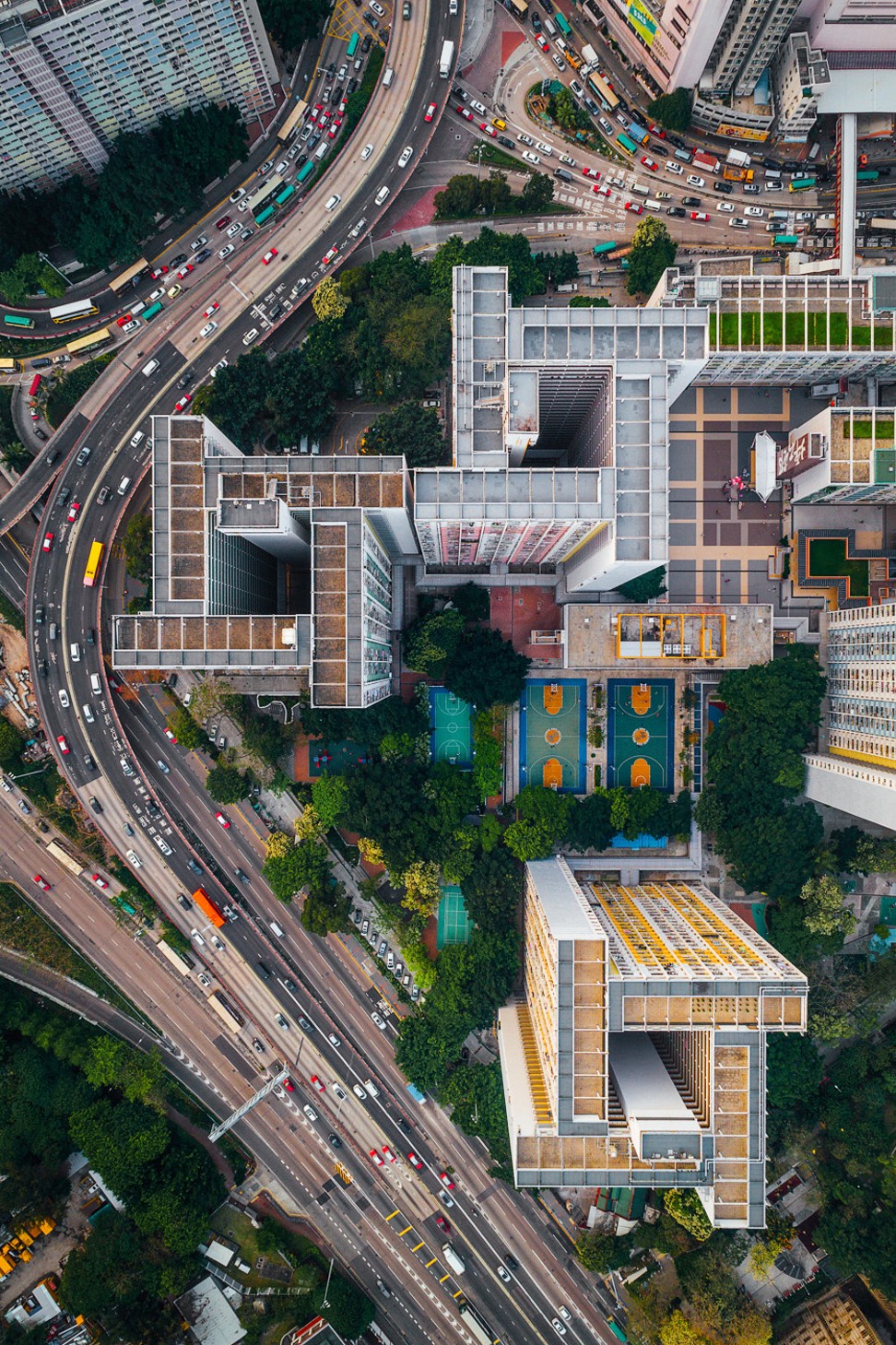
Yeung’s Walled City series features images of housing estates such as Ping Shek, Shun Tin and Wah Fu and was shot with a DJI Phantom 4 Pro.
“Some urban places are difficult to fly,” he says. “The most difficult part is finding the right take-off location. Some places your remote signal gets interference from the buildings, so sometimes I have to head for the hills to avoid this.”
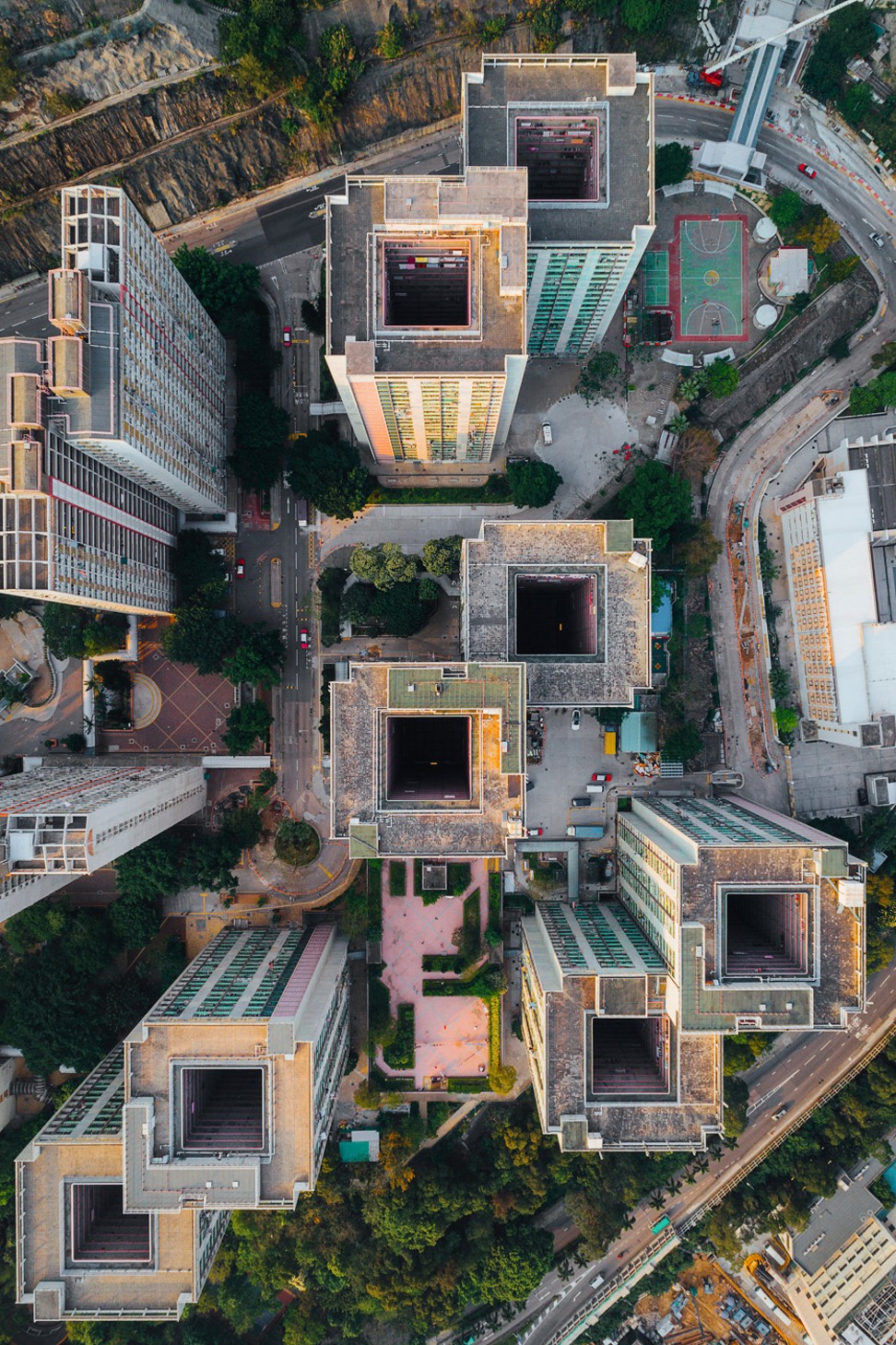
Yeung, whose passion for photography started when his father gave him one of his old cameras as a child, started drone photography two years ago. His work has drawn international attention and won him numerous awards, including the PX3 Photo Competition and the International Photography Awards in 2015.
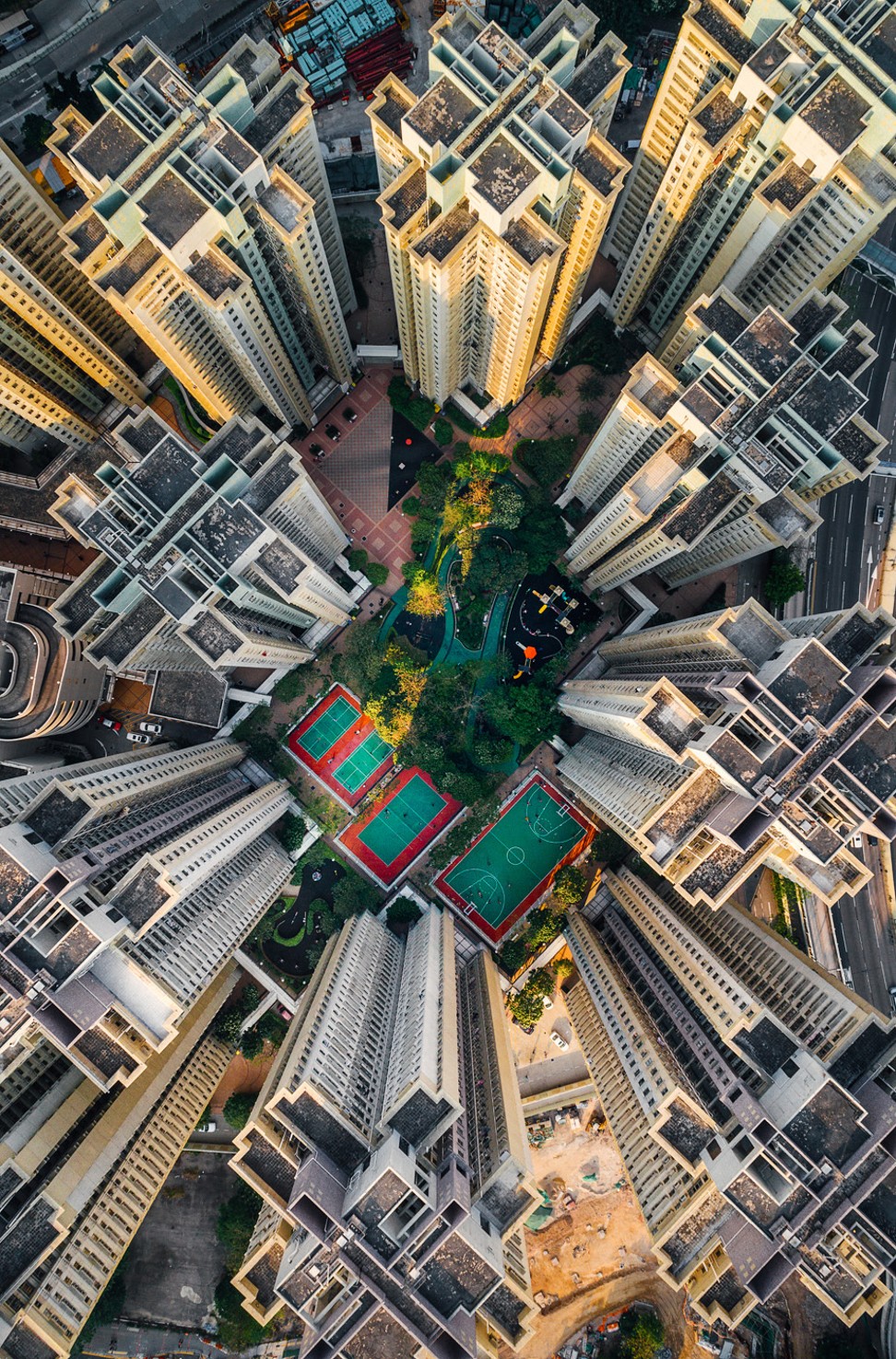
Yeung says he likes to let his photos speak for themselves. “I hope my photos make people think. I didn’t say too much about this series when I posted them on Facebook. I want to let everybody have their own different feelings after looking at my pictures. As long as they provoke some kind of emotion, then I’m happy.”
